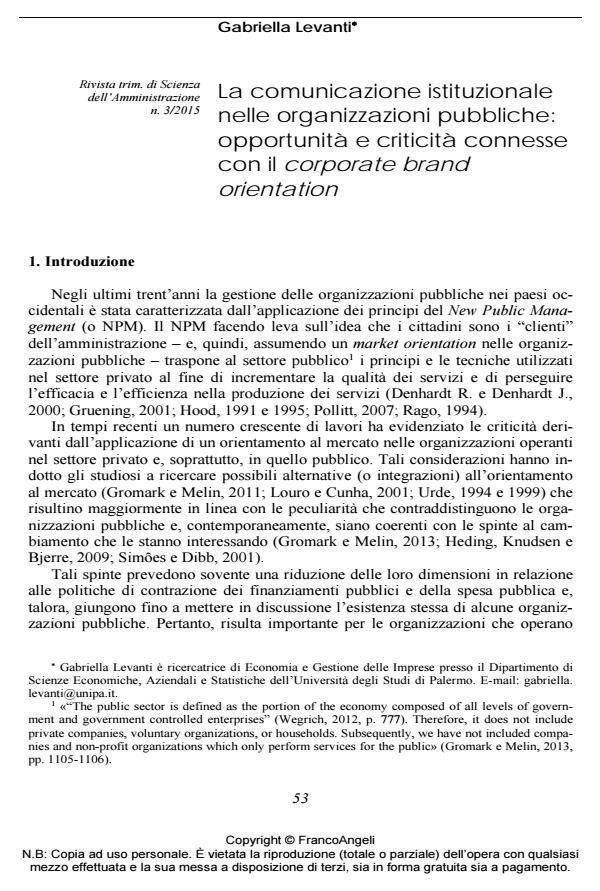La comunicazione istituzionale nelle organizzazioni pubbliche: opportunità e criticità connesse con il corporate brand orientation
Titolo Rivista RIVISTA TRIMESTRALE DI SCIENZA DELL’AMMINISTRAZIONE
Autori/Curatori Gabriella Levanti
Anno di pubblicazione 2015 Fascicolo 2015/3
Lingua Italiano Numero pagine 14 P. 53-66 Dimensione file 111 KB
DOI 10.3280/SA2015-003004
Il DOI è il codice a barre della proprietà intellettuale: per saperne di più
clicca qui
Qui sotto puoi vedere in anteprima la prima pagina di questo articolo.
Se questo articolo ti interessa, lo puoi acquistare (e scaricare in formato pdf) seguendo le facili indicazioni per acquistare il download credit. Acquista Download Credits per scaricare questo Articolo in formato PDF

FrancoAngeli è membro della Publishers International Linking Association, Inc (PILA)associazione indipendente e non profit per facilitare (attraverso i servizi tecnologici implementati da CrossRef.org) l’accesso degli studiosi ai contenuti digitali nelle pubblicazioni professionali e scientifiche
Negli ultimi trent’anni la gestione delle organizzazioni pubbliche è stata caratterizzata dall’applicazione dei principi del New Public Management (o NPM). Il NPM facendo leva sull’idea che i cittadini sono i "clienti" dell’amministrazione, traspone al settore pubblico i principi e le tecniche utilizzati nel settore privato al fine di incrementarne le performance. Il presente lavoro, dopo aver analizzato i limiti derivanti dall’applicazione di un market orientation nelle organizzazioni pubbliche, evidenzia come il corporate brand orientation rappresenti, in forza di una visione olistica e bilanciata dell’organizzazione, un’alternativa maggiormente coerente con le peculiarità delle organizzazioni pubbliche. In particolare, il lavoro mette in luce le opportunità derivanti dalla creazione di public corporate brand forti. Successivamente, si sofferma sulle criticità che contraddistinguono la gestione della comunicazione istituzionale e del corporate branding nelle organizzazioni pubbliche. Parole chiave: comunicazione istituzionale - corporate brand - organizzazioni pubbliche
Parole chiave:Corporate communication - corporate brand - public sector
Gabriella Levanti, La comunicazione istituzionale nelle organizzazioni pubbliche: opportunità e criticità connesse con il corporate brand orientation in "RIVISTA TRIMESTRALE DI SCIENZA DELL’AMMINISTRAZIONE" 3/2015, pp 53-66, DOI: 10.3280/SA2015-003004